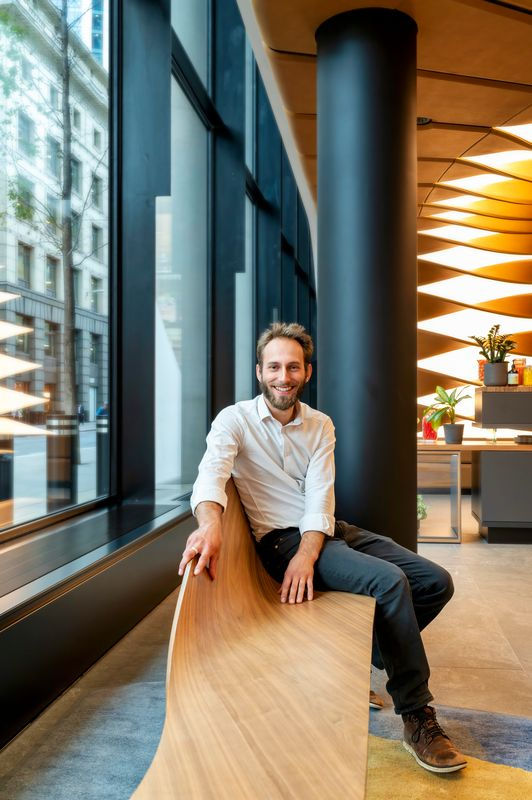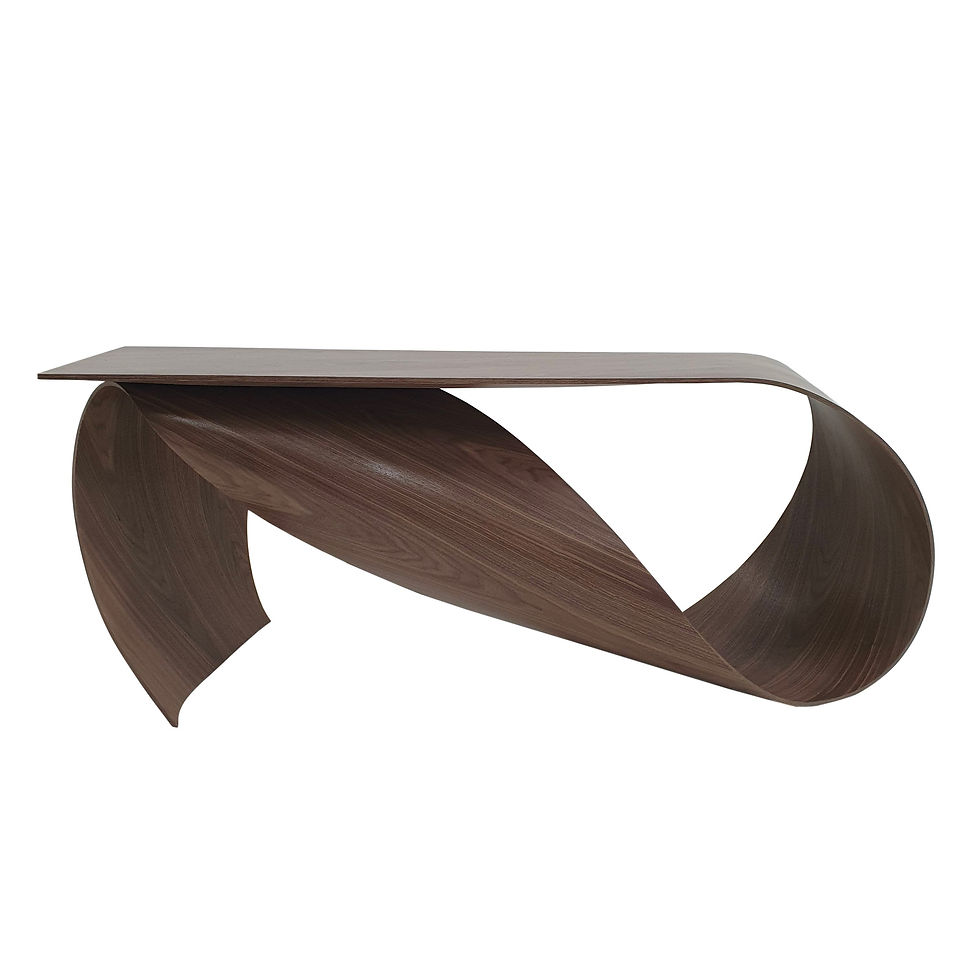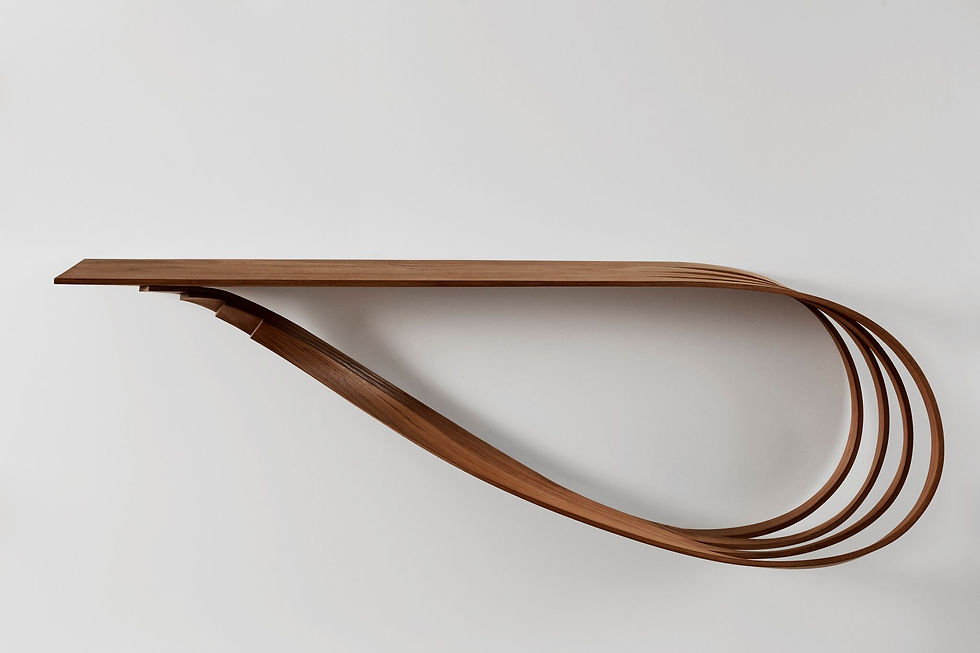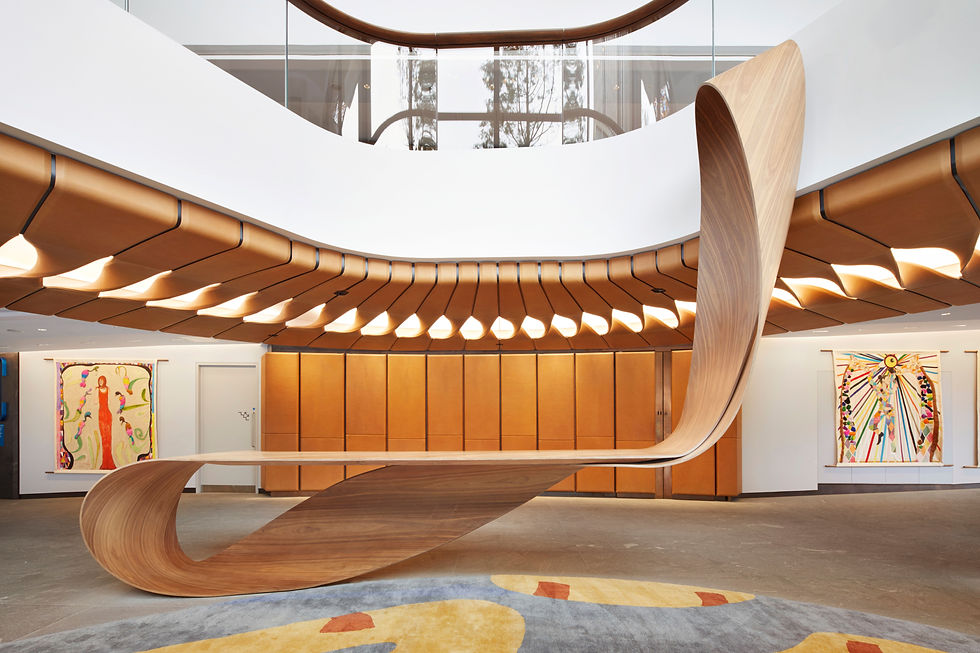
J: Today my guest is Pierre Renart. A young artist who is reinventing the conventions of working with wood. The designer creates furniture that are like sculptures, however he also focuses on functionality. The artist has been represented by the Maison Parisienne gallery since 2011, and his unique pieces can be found in private collections as well as in the Musee des Arts Decoratifs and Mobillier National in Paris. Welcome!
R: Hi!
J: You graduated from Ecolle Boulle in 2011, with a degree in woodworking. So what is the design profession for you?
R: My profession is based on working with wood. I really like this material and have been working with it for many years. I am both a designer and a direct implementer of my works. My main intention is to create unique and original forms, using wood. I want to create works that give the effect of fluidity, purity and timelessness. Each of my projects is meant to speak for itself.
J: And do you find your works in any particular art style?
R: I don't refer to a particular style. My main focus in my works is on the care and elegance of lines. The results must always be delicate, sensual.
J: So what is your favorite part of the creative process?
R: Lately I've been returning to ideas that I had in mind when I began my work as a designer. These ideas take time to bloom, but my practice and expertise now enable me to bring these concepts to fruition. It'svery exciting! The ideas I had at the time were subject to technical constraints that I couldn't get around,and now these creations are possible. It is really the development of my savoir-faire that feeds my creative process.
J: I get the impression that studying at Ecolle Boulle has given you a lot. It developed you and your art. So do you have a favorite memory from there? A favorite subject? Or the professor?
R: It brings back the memory of my workshop teacher Mr. Alain Mangaud, especially of one particular moment, when we needed an ancient tool, that was difficult to find for my work in progress at the time. I managed to build this tool myself which allowed me to progress further with the technique.
J: It sounds very interesting. I assume it was not an easy task. Referring to the difficulties of a designer's work, which moment of design do you consider the most difficult for you?
R: The most difficult part of my creation, is finding balance in the technical limitations of the material, wood. The designs I create or will create in the future are to be used as furniture, which requires them to be stable and resistant. My furniture creations, are sculptures, but I always pay great attention to functionality. The essence of my work is to combine elegance with functionality and jump over the limitations of the material. This is a big challenge, but it gives my work value and makes my works unique.
J: They are certainly unique. And what tools do you use to design? Do you prefer hand-drawn design or design programs?
R: I hardly draw, sometimes I use Rhinoceros software for modeling. I work from an outline and create 3D models - mock-ups. This allows me to adjust proportions and observe the strength of the material. I use a thin sheet of wood to create a mock-up at a scale of 1:10. Wood behaves the same at different scales: this works at a scale of 1:10 and at a scale of 1:1. Mock-ups are a way that has allowed me to succeed in creating and bringing to "life" new works. Such close contact with wood, allows me to be closer to reality.

J: That's really interesting and I think quite an unusual approach to the design process. And how did you find your style, was it a matter of random inspiration or, for example, market research?
R: My style stems from a double desire: that of advancing the material of wood and that of creating sculptural furniture-and not the archetype of a typical wooden piece of furniture (four legs and a top for adesk, for example). The approach gives the illusion that my works were created in a single movement, in a single fluid gesture. The resulting aesthetic fluidity and purity of the movement have been inspired by nature.
J: That sounds great. It's very good to hear that inspiration from nature is appearing more and more in art. It's certainly more interesting than the four legs and a tabletop you alluded to earlier. Of course, not to put down simple forms, I think your works are just something fresh and new. And speaking of your works more selectively. What was the direct inspiration for your particular collections i.e. Genèse, Ruban, Fusion?
R: The Genèse collection is inspired by a chair I created to achieve my degree. I wanted to develop a more contemporary interpretation of the Art Deco style while maintaining the elegance of its lines. From the Genèse collection, the idea of designing pieces that appear to be one movement was born, which inspired all my further work.

The first piece in the Ruban collection was the Möbius console. The idea was to create an infinite loop. Thus ensuring purity of shape. I like the idea of a piece of furniture that has no end. My technique of joining wood allows me to create endless possibilities that go beyond the Möbius console. The Wave desk, the Wave console, the Wave table are not infinite ribbons, but are always created in one stroke and are directly inspired by the pure movement of waves.


In the end, the title Fusion given to my latest collection, is a literal description of it. On the one hand, it combines the styles of the first two collections Genèse and Ruban. On the other hand, it refers to the strips of wood that come together, causing the birth of a new collection.

J: Excellent, thank you for bringing the importance of your work to our readers. And what do you consider your greatest achievement?
My biggest technical success is the 22 Bishopsgate project in London. It is a real technical feat in manyways. First of all, the furniture from the Ruban collection is pushed to its maximum size. Secondly, it required a long process of dialogue and design with the architectural firm to perfectly integrate my furniture in the building. A set of limitations was also necessary to impose in order to respect the technical conditions of the buildingwhile preserving the aesthetics of my furniture. There is a central piece in the lobby, the High Table. This piece is 5 m long and 4m high and suspended between the floor and the ceiling. There were also two original supporting pillars in the lobby of the building that bothered the architects. I worked with them and wrapped benches, several meters long, around the pillars.
My greatest honour is to have been able to integrate my work into the permanent collections of the Musée des Arts Décoratifs with my Möbius console as well as having two pieces, the Möbius console and the Eclosion table, included in the permanent collections of the Mobilier National.


J: I am very impressed with the project at 22 Bishopsgate. One more question bothers me. What tools do you use? Any machining programs, cut-outs (such as CNC laser cutting) or is the whole process manual?
I sometimes use machining programs, notably with a digital milling machine. However, this is very insignificant in my work because the entire production process is manual. There are three important steps in the realisation of my creations:
First of all, there is preparatory work that can only be done manually, such as marquetry, to achieve the illusion of a single piece of wood.
Then there is the work of shaping which is very precise and can only be done manually.
Finally, the finishing stage is also done manually.
This is why each piece is unique because the curve is determined by the constraints of the wood, which differs from one tree to another
J: And this uniqueness makes your designs even more special. Thank you very much, for this inspiring conversation and I wish you even more success.
R: Thank you as well.
For more Pierre Renart designs, check out here:
Comments